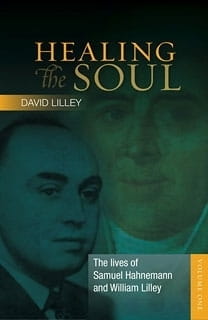Reprinted with the permission of The Society of Homeopaths, (from 'The New Homeopath' Journal, Winter 2020 edition). Reviewed by Allan Pollock RSHom.
Few of us have a father with the gift of psychic healing, but it was so in the case of Dr David Lilley. His father, William Lilley, had remarkable clairvoyant skills from a young age, and by his teens was a proficient trance-medium. Though 'Billy' was from a poor mining community in Yorkshire, these peculiar abilities led him on a lifelong journey of healing - primarily with homeopathy.
His story is too extraordinary to summarise much further here, but suffice to say that William Lilley, channelling the medical skills of a spirit guide and aided by the financial backing of a Leeds industrialist, established a number of clinics in England, the largest in Marylebone near Harley Street during the latter part of WWII.
Family story: Early in the 1950s, the Lilley family emigrated to South Africa where William continued to work until his death in 1972. His case load amounted to many thousands; his cures the witness of many sufferers; and his treatments scrutinised by medically qualified physicians of open mind.
This story is told in full in the second half of volume 1 by his son David who qualified in medicine from the University of Pretoria in 1962, subsequently training in both homeopathy and osteopathy.
The first half of volume 1 opens with a survey of Hahnemann's life and then, in a chapter entitled 'Pride, prejudice and politics', Lilley reflects on the controversy that dogs homeopathy to this day. He concludes with a look at the nature and purpose of disease; man's dynamic (immaterial) nature; the limitations of materialistic medicine; and the potential relevance of quantum physics.
Volume two: Having set the stage in volume 1, volume 2 advanced the central theme, namely 'Healing the Soul'. Part one opens with an explanation of the terms Archetype and subsequently considers the atavistic (ancestral) form, reaching back to the Creation and the 'birth' of the first atoms - hydrogen and helium - using data from the homeopathic provings to illustrate those forms.
The birth of the universe has great meaning for Dr Lilley, for whom there is most surely a cosmic purpose and design. By way of illustration he moves on to consider in some depth two other fundamental elements arising rom 'stellar alchemy' that have deep significance as homeopathic medicines, Graphites and Silicea.
In part two, Freud's psychosexual development stages are appraised, with the occasional foray into the remedy pictures from the homeopathic materia medica to illustrate correspondence, together with a retelling of the Oedipus myth from a homeopathic perspective. The profound consequences of 'fixation' during development phases on the psyche, and the potential releasing power of homeopathic treatment is considered, notably through the picture of homeopathic Arsenicum album, best known - in material from - as arsenic trioxide, once the preferred poison of the serial killer. Portraits of some infamous murderers demonstrate the relevance.
Jungian though: Whilst Freud's work has found more acceptance within conventional medicine, it is the later perspective of Jung that best aligns with homeopathy. Dr Lilley sees homeopathy as 'the therapeutic arm of (Jungian) analytical psychology ... provid(ing) clear proof of the theoretical conclusions that Jung propounded'. As with Hahnemann's homeopathy, the implications of Carl Jung's understanding of the spiritual, and his concept of individuation (spiritual attainment) have yet to be fully appreciated.
The concluding chapters are primarily a reflection on Jungian thought. The symbolism of the pin (needle) is considered, then the archetypal form of the spiral which finds expression in such as Yin and Yang, the Chakras and Nadis and indeed DNA, concluding with the Jungian concepts of Animus and Anima and The Shadow.
Criticism: These two volumes cover a vast amount of ground; this is, after all, an attempt to put some portion of a lifetime's experience and learning to paper. A criticism might be that too much ground is covered, but setting that aside, these books demonstrate the complexity of the human psyche, and the limitations of the reductionist thinking that dominates medical science today.

